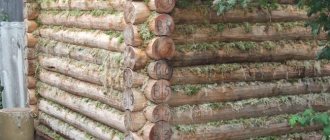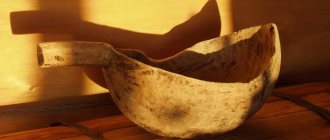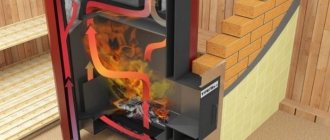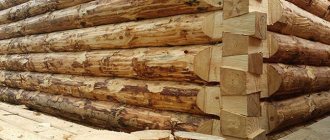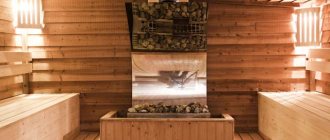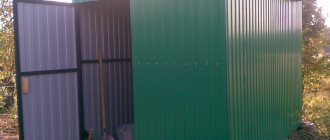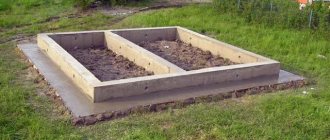The composition of the furniture in a Russian bath or sauna is not particularly rich and rich. There are enough simple and functional items here that can provide rest and comfort to users.
Benches are among the most necessary and mandatory items - they are present in any bathhouse, regardless of its size and frequency of use. You can buy a ready-made bench for a bath in any specialized store. You can also order it from a carpentry workshop if the finished models are not suitable for use in a bathhouse according to some criteria.
However, most owners consider it inappropriate to purchase ready-made benches. They are very simple to manufacture and, as a rule, are made independently. Let's take a closer look at this issue.
Product Features
The main feature of bathhouse benches is their resistance to temperature changes and moisture. This product also comes into direct contact with the skin, so it must be safe and environmentally friendly. A bench for a bath should have the following characteristics:
- High density of wood, ease of processing.
- A small amount of resins in the material.
- Low thermal conductivity.
- There is no risk of deformation of wooden parts when heated.
- Compactness and stability of the product. The bathhouse bench should not have sharp corners or protruding parts. The center of gravity of this furniture is low.
- The absence of metal elements in places where they may accidentally come into contact with the skin, as there is a risk of burns.
- Well polished wood parts.
- Using natural protective agents to treat furniture.
- The bench is installed only against a blank wall. In this case, the distance to heating devices must be maintained. A small gap between the bench and the wall is also required.
It is prohibited to use paint or varnish for finishing. Constant exposure to moisture will cause this layer to quickly deteriorate. At high temperatures, varnish and paint can also emit harmful fumes.
There should be some free space under the bench so that it can dry quickly.
High wood density
Compactness and stability of the product
Low thermal conductivity
Well polished wood parts
Using natural protective agents to treat furniture
Wooden benches: design features
Let's first talk a little about terms. The fact is that we somehow naturally manage to make words interchangeable - “bench”, “bench”, and then “shelves” (some write “canopy”, but in this writing it’s already something like tents over the bed). We still need to differentiate somehow.
Of course, there are stationary and portable benches. But let's agree that in a bathhouse a bench is a portable seat, a bench is, well, if not attached to the wall, then at least a seat adjacent to it, and a shelf is a lounger or seat intended for steaming or being steamed exclusively in the steam room. The shelves can be stationary, removable, folding, folding, tiered. Even if a bench or bench is used as a shelf, if people are steaming on it, we will call it a shelf or shelf.
By and large, there is no difference - I took the shelf outside, it became a bench
Now let's move on from philology to carpentry. The simplest bench is not a board with two wide legs. You need to understand that a board with two legs will not last long. Those sitting will rock it, so sooner or later it will collapse - the fastening is not so large that this will not happen. Therefore, the simplest bench is a seat board, a couple of four legs and braces, or a transverse brace between the legs in the middle of the height of the legs or close to the floor.
The second important point is sustainability. Do it in such a way that the person who sits on the edge does not tip over along with the bench. A heavy structure, low or with a wide seat will not tip over.
ADVICE! However, there is such a nuance: it is better to make such pieces of furniture from not too massive boards, because the more massive the board, the longer it will take to dry after gaining moisture. Take this fact into account!
There is one more rule regarding what a seat in a steam room should be like: gaps must be left between the bars. The optimal gap width is 1-1.5 cm. It is clear that they are needed to drain water and speed up drying.
Ergonomics
Ergonomics is the science of how to make things and processes comfortable for humans. In this case, we are talking about ensuring that the seats in the bathhouse do not cause inconvenience due to their size.
Of course, much when choosing sizes will be dictated by the size of the rooms themselves for which you are planning to make benches for a wooden sauna with your own hands. But the height of the seat is a point that is of great importance, but depends little on the size of the room.
It is preferable that the seated person's knees are not raised relative to the pelvis, so the seat should not be too low. However, too high is also uncomfortable - your legs will dangle in the air without support, which increases pressure on the vessels under the knees and in the hips. Therefore, we can proceed from the height from the floor to the knee bend of adults.
Various ergonomics manuals advise making the height from 30 to 50 cm. We believe that it is easier to derive the arithmetic average from the measurements of the people who will most often use this bathhouse.
The width of the seat depends on how they will sit on it - if they sit as usual, then 30-40 cm is enough, and if reclining, then 60 cm.
Those benches on which the steamer will lie must be long enough to accommodate him at full height, and also wide enough so that he can freely place his arms along his body. It is also better to measure such things on specific people.
BY THE WAY! Adherents of the Russian bath should remember that the height of the upper shelf on which the steamer lies is about 85 cm, and the shelves cannot be covered with clapboard to the floor, because the steamer’s feet are located under the bench or shelf.
Before introducing you to the drawings, we recommend that you take a look at our other material, which describes in detail all possible types of benches.
Types and sizes
It all depends on the installation location and purpose of the furniture. However, there are some standard options:
- Bench for lying down. Its width is 90 cm and its height is 50 cm. The length of the product is 90 cm for 1 person. If the bench is designed for several vacationers, then each of them requires another 60 cm of additional space.
- For sitting. Width – 40 cm, height – 50-90 cm. Since this type of bench has a back, its height is 110 cm.
- For saunas. The height of the device is 50-90 cm, width is 60 cm. The backrest here is the same as in the previous version.
Size and shape of bath benches
The steam bath bench is about 180 cm long. This furniture can be mobile or stationary. Types of products by design are presented in the table.
| Design | Characteristic |
| Single-tier | The simplest design, designed for small spaces. Most often it is portable, so it can be installed in any room of the bathhouse. |
| Bunk | Installed in large rooms and can accommodate a person of tall or average height. In order to get to the second floor, a staircase (additional) is provided. |
| Three-tier | It is installed in a large bathhouse, where it is possible to maintain a distance of 130 cm from the top shelf to the ceiling, and 100 cm between tiers. The bottom shelf is small in size. |
| Stepped | Used in small spaces. A person can sit on the top shelf, and the lower step is intended for sitting or helping to climb up. |
When installing multi-tiered products, you should give preference to those options in which the upper parts are removable and the middle parts are stationary.
Single-tier
Bunk
Three-tier
Stepped
Questions and answers
We will answer the most common questions that inexperienced users have when making benches.
Is it necessary to use antiseptic and fire retardant impregnations?
In this case, this will be an unnecessary procedure. The benches in the bathhouse are constantly in contact with water. Under such conditions, any composition will be washed off in the first weeks, and no beneficial effect will be obtained. Therefore, it is not advisable to use protective compounds for benches in a bathhouse.
What to do if only pine boards are available?
This is a very common situation. However, there is nothing to worry about. You just need to pay special attention to choosing the material for the seat and backrest. To do this, plan the boards and visually determine the cleanest of them (resinous boards are easy to distinguish by appearance). Then they proceed according to the usual method.
What is the height of the sauna benches?
Usually a standard size is used - about 50 cm in height. However, if necessary, the height or width of the seat can be increased. Here the selection criterion becomes the height or features of the figure of the owner and his household.
Do mobile benches need to be made to a maximum length for greater capacity?
The criterion for the length of the benches should be the layout and configuration of the bathhouse. The bench will have to be moved, and its size should allow this procedure to be carried out without difficulty. Otherwise, the choice of sizes is the prerogative of the owner.
If you still use ordinary nails or screws, how to hide them?
The fasteners should be recessed into the wood by 1 cm (minimum), and then plug the holes with tight plugs using the adhesive composition. When it dries, the protruding parts of the chops are cut down flush with the plane and this area is carefully sanded.
Creating a Design Drawing
To make a bench for a bathhouse with your own hands, you must first create a drawing of it, indicating the width, length and height of each design detail, as well as the dimensions of additional elements. Naturally, you need to decide on the shape and type of product. If there is a backrest, in addition to its height and width, an angle of inclination is required.
Making drawings with your own hands is not so difficult. To create, you need the dimensions of the room itself. All wooden components are cut strictly according to the parameters shown in the figure. For convenience, the drawing can be made in several projections.
Additional functionality – awnings over benches
If there are no shady areas on the site, then an additional canopy can be provided for protection from the sun.
Let's look at several options for its implementation. The canopy can be installed separately or made part of the structure, as in the presented photo. Here we see 4 racks made of timber, on which the top trim is made. The roof is formed by boards installed on edge - the classic form of a pergola. Lath trellises were added to the sides of the structure. All this will become a reliable basis for climbing plants, which after a while will provide beautiful and cool shade.
Pergola canopy
Installing a large canopy can be made from a simple bench into a swing. This functionality will be appreciated by both adults and children.
Means of protection
If you made a bathhouse bench with your own hands, then you need to take care to protect it from the occurrence of fungus and mold, prevent fire or change in appearance. For this purpose, special compounds are used, which are applied before the first use of the furniture. They must not contain harmful chemical components. The packaging of the product should be marked “for baths and saunas.”
The most resistant to water are aspen and larch. These materials do not need to be further processed. In other cases, the following tools will be required:
- Oils. They are quickly absorbed into the wood and do not form a film. Such compositions are used in steam rooms and reliably protect furniture from moisture.
- Oil wax. It contains flax or hemp oil and a bee product. This type of product is used in a steam room or washing room. When exposed to high temperatures, the substances do not become hazardous to human health.
- Bleaches. They contain oxidizing agents that prevent the wood from darkening.
- Fire retardants. Since the benches will be used in conditions of elevated temperatures, as well as near open sources of fire, the risk of fire should be prevented.
No paints or varnishes should be used. Since the protection will need to be renewed periodically, the previous one must be cleaned before applying the next layer.
Oil
Oil wax
Bleach
Fire retardants
Material selection
Coniferous trees predominate on the territory of our country:
pine
larch
spruce
fir
All these rocks can be used to make bathhouse benches. However, experienced craftsmen do not recommend dealing with them due to the texture and abundance of resin.
Larch is especially dangerous in this regard. Many inexperienced bathhouse owners, having read stories about the properties of this wood and the fact that it does not rot, gather boards and begin making benches.
As a rule, the results of such actions are disastrous. Larch takes a long time to dry, acquiring very strong internal stresses in the process of removing moisture. Splinters appear and resin pockets open up, creating the danger of burns.
Expert opinion
Lovkachev Boris Petrovich
Bath master who knows everything about steaming
In general, resin is one of the main problems of coniferous trees. Spruce and fir have a large number of knots that produce resin abundantly. Pine is somewhat better in this regard, especially if it has been tapped - practically no resin comes out of it.
However, hardwood remains the best choice:
aspen
alder
Linden
birch
maple
The most common deciduous wood species in our country are listed. Aspen is in the lead - it tolerates frequent contact with moisture well and does not rot (provided that the boards were initially clean and there was no core rot).
Alder also performs well in sauna conditions, but is more difficult to find on sale. Its wood is yellowish-white with a pink tint. If you can find a sufficient amount of good material, the benches will turn out to be of high quality and practical.
Linden is a soft and rather loose wood with a straight-grained fiber structure. It is well processed and excellently withstands frequent contact with water. However, it is more difficult to find linden boards due to the lack of industrial reserves of this species.
Birch has pure white wood with a distinct brownish core. It gives off and absorbs moisture well, which makes it a rather complex material. In addition, the quality of wood varies significantly depending on the growing conditions.
Therefore, birch is much less often used for making bathhouse benches. In addition, birch wood is dense and quite tough, requiring the use of high-quality tools.
Maple resembles birch, but is a denser and harder wood. Well-processed maple is quite suitable for making benches, but the presence of wood of this type in the public market is limited.
Sometimes furniture for a bathhouse is made from exotic species. For example, they use abash, an African type of oak. However, this choice is much more expensive, but does not provide any advantages.
You should not use dense wood for benches - they have increased thermal conductivity and can burn users. The best choice would be loose, inexpensive and durable aspen.
Care Tips
Sauna benches are used in difficult conditions and therefore require special care. To make wooden furniture last longer, you need to follow these recommendations:
- regularly ventilate the room to avoid the development of fungus and mold;
- Complete each bath day by cleaning all rooms and drying all equipment;
- periodically you need to heat the bathhouse empty, bringing the temperature to 100 degrees (to destroy all pathogenic microorganisms);
- From time to time inspect the structures for the appearance of rot.
A wooden bench is a mandatory attribute for a bathhouse, which requires proper care. You can make it yourself, and it won’t take much time.
